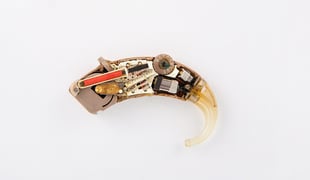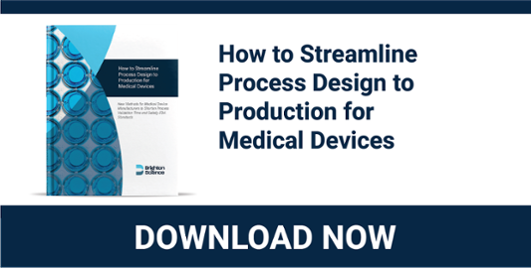Medical Devices Face Unique Regulatory Pressures — and Surface Quality Plays a Bigger Role Than You Think
Product reliability isn't optional in the medical device industry; it’s a regulatory requirement. Manufacturers must meet a growing number of global quality standards, from FDA regulations to EU MDR and ISO 14971. Amid this complexity, one critical yet often under-validated factor is surface quality, the molecular-level condition of device surfaces that directly affects bonding, sealing, coating, and sterilization outcomes.
Whether you’re assembling diagnostic cartridges, coating implants, bonding housings, or validating plasma treatment, the question remains: How clean is clean enough — and how can you prove it?
That’s where surface-sensitive measurements, like water contact angle (WCA), become a powerful tool in managing risk, proving process control, and avoiding costly regulatory delays.
Surface Contamination: A Common, Hidden Cause of Manufacturing Disruption
Medical device manufacturers often rely on visual inspection, cleaning protocols, or legacy tests like dyne inks and water break tests to verify surface condition. But these methods lack precision and fail to measure actual molecular cleanliness, which can change due to: 
- Handling during packaging and assembly
- Environmental exposure (e.g., humidity, particulates)
- Inconsistent cleaning or plasma treatment processes
- Residual contaminants are invisible to the eye
These invisible contaminants can lead to:
- Adhesion failures (e.g., delaminated coatings, loose seals)
- Coating flaking post-sterilization
- Inconsistent drug delivery due to surface variability
- Failed process validations (IQ/OQ/PQ)
- Audit findings that delay approval or require costly remediation
When these failures emerge during final testing, clinical validation, or regulatory review, they become serious bottlenecks.
Surface Quality is a Process Variable and Needs to Be Measured Like One
Device performance and regulatory approval both depend on reliable, validated manufacturing processes. That includes the often-overlooked variable of surface condition.
Brighton Science’s Surface Analyst uses patented Ballistic Deposition Technology to perform rapid, repeatable water contact angle measurements, directly on production parts, in real time.
Why Water Contact Angle (WCA) Matters
Water contact angle provides a precise, quantitative measure of surface energy, correlating with how well adhesives and coatings interact with the surface. It tells you if a surface is clean, not just visually, but at the molecular level, where performance is determined.
This enables medical device manufacturers to: 
- Set and monitor surface quality specifications
- Validate cleaning or plasma treatment effectiveness
- Detect contamination before failure occurs
- Reduce variability during bonding or coating
- Demonstrate control over critical-to-quality (CTQ) parameters
Enabling Faster, Stronger Process Validation
Process validation is a major regulatory hurdle for new and updated medical devices. Surface-related failures can derail:
- Installation Qualification (IQ) – if surface prep tools aren’t calibrated or repeatable
- Operational Qualification (OQ) – if bonding or coating steps fail due to surface variability
- Performance Qualification (PQ) – if product functionality or reliability is compromised
Real-World Example: Pre-Qualifying a Backup Supplier with Surface Quality Data
A hearing aid manufacturer came to Brighton Science with a familiar challenge in medical device manufacturing: supplier variability and the regulatory risks associated with it. Their team was looking to qualify a backup supplier for a titanium chassis component that required precision bonding and over-molding. However, changing suppliers in the medical space involves major hurdles, from revalidation to regulatory approvals, so getting it right the first time was essential. 
Our scientists used water contact angle measurements to evaluate how clean each supplier's titanium surface truly was, both before and after undergoing the customer's standard wash process. Despite identical treatments, parts from different vendors showed significant differences in surface energy, revealing residual silicone contamination on some samples.
The parts that started out cleaner responded better to the cleaning process. Others, with more embedded or stubborn contamination, retained lower surface energy even after washing — a red flag for potential bonding issues.
This analysis gave the manufacturer the data they needed to:
- Choose the supplier most likely to pass process validation
- Justify supplier selection with measurable, surface-level evidence
- Avoid regulatory bottlenecks tied to adhesion reliability or cleaning effectiveness
In the end, surface quality data made the difference between risk and readiness, helping the manufacturer maintain product integrity and streamline compliance documentation.
Designed for Production, Not Just R&D
Many surface analysis tools are built for the lab. Brighton Science is different. The Surface Analyst is engineered to work directly in the manufacturing environment — inline or offline — on real parts.
Key Capabilities:
- Fast, non-destructive testing (<3 seconds per measurement)
- Use on flat or complex part geometries
- Trackable, traceable data that supports GMP and ISO standards
- Supports cleanroom and sterile workflow integration
- Cloud connectivity with BConnect for cross-site monitoring and process improvement
This means surface quality can be monitored just like temperature, torque, or pressure, as part of a controlled, validated process.
Supporting Regulatory and Quality Teams with Better Evidence
Global regulators are looking more closely at how manufacturers control variables that affect adhesion, biocompatibility, and cleanliness. Brighton Science helps medical device teams:
- Develop evidence-based surface quality specifications
- Strengthen risk documentation (e.g., FMEA, control plans)
- Improve CAPA responses with root cause surface data
- Confidently answer auditors about cleaning or prep steps
- Align with FDA and EU MDR expectations for traceability and process control
Why Leading Medical Device Manufacturers Choose Brighton Science

Over 450 manufacturers — including leaders in diagnostics, drug delivery, surgical tools, and implantables — use Brighton’s technology to validate bonding processes, reduce rework, and eliminate surprises late in development.
They chose Brighton Science because:
- Our Surface Analyst gives accurate, real-time WCA data on real parts
- Our patented Ballistic Deposition Technology replaces unreliable legacy tests
- Our BConnect platform brings surface intelligence to global operations
- Our Brighton Academy enables teams to quickly build surface quality expertise
- Our systems are designed for production and automation, not just lab R&D
Avoid Regulatory Bottlenecks by Making Surface Quality Measurable
If you can’t measure it, you can’t control it, and in medical device manufacturing, what you can’t control becomes a regulatory liability.
Brighton Science helps teams measure, validate, and monitor surface quality, giving them the confidence to move faster, with fewer surprises, and more reliable outcomes.
Talk to Brighton Science About Improving Surface Quality Control
Whether you're launching a new device or solving a recurring bonding failure, we can help.




